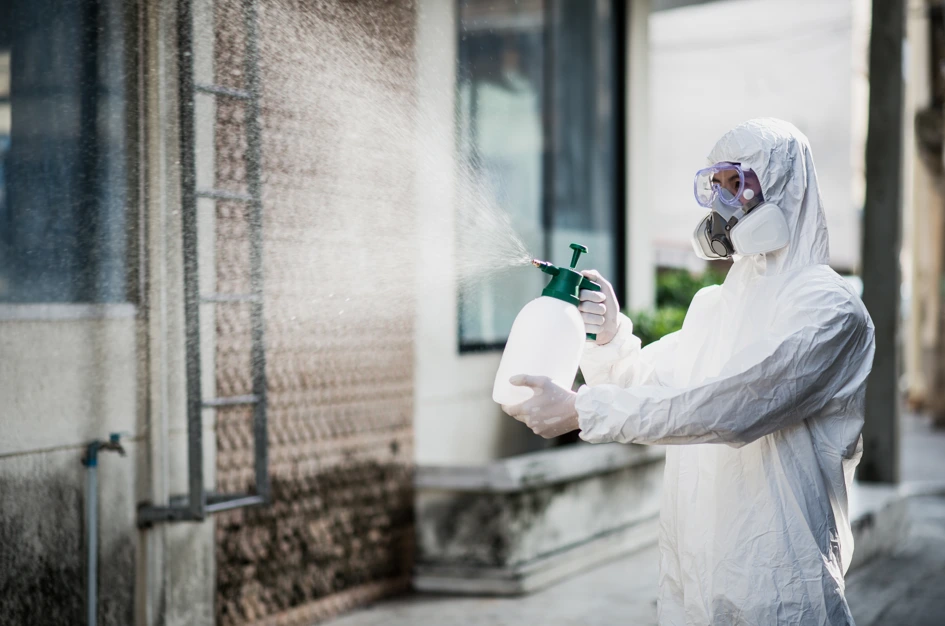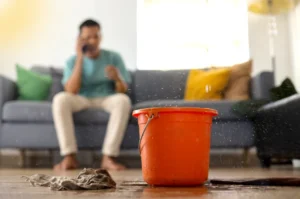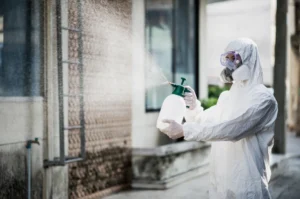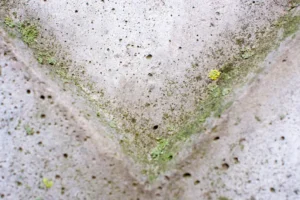Mold inside the home is more than just a surface-level problem, it can affect indoor air quality, damage structural materials, and lead to long-term health concerns if left untreated. Whether it shows up on walls, ceilings, or in hidden damp areas, mold needs to be removed properly to prevent it from coming back.
This guide explains how much does mold remediation cost and what factors can influence the final price you’ll pay.
What Most Homeowners Pay for Mold Remediation?
On average, homeowners can expect to pay between $1,000 and $4,000 for mold remediation. That cost covers everything from inspection and containment to cleanup and post-remediation verification. For small, isolated mold problems, like a patch beneath a sink or behind a fridge, costs may fall closer to $500 to $1,500, especially if no major damage or reconstruction is required.
For larger infestations or mold that has spread through porous materials like drywall or insulation, the price can jump to $6,000 or more. Full remediation in basements, attics, or HVAC systems often requires specialized equipment, protective barriers, and professional-grade cleaning agents, all of which increase overall cost. It’s also important to factor in post-remediation repairs, usually not included in the initial estimate but still necessary.
The Real Reasons Your Mold Cleanup Quote Might Vary
The cost of mold removal isn’t just based on size. Many variables, some obvious, others not, contribute to the final price. From where the mold is located to how toxic it is, each factor plays a role in determining how complex the job will be and what resources are needed. Let’s look at the most common factors that affect mold remediation costs in more detail.
Larger Mold Areas Come With Bigger Cleanup Bills
The total cost of mold remediation depends largely on how much area the mold covers. Larger infestations require more cleaning supplies, labor, equipment, and containment materials, raising the price. A small patch in a bathroom costs much less than mold spread across multiple rooms.
When mold covers a big area, professionals spend more time setting up containment zones and using machines to stop spores from spreading to clean parts of your home. These extra precautions add to the effort and cost.
The Longer You Wait, the More It Costs to Remove Mold
If mold is caught early, it’s usually limited to a small surface area and can be cleaned quickly with minimal expense. But when mold grows unchecked for months or years, it spreads deeper into walls, floors, and HVAC systems. This can cause hidden damage requiring more extensive removal and repair.
Older mold infestations weaken building materials like drywall and wood, leading to structural problems. Cleanup then involves demolition, removal of damaged materials, and rebuilding, all of which increase remediation costs significantly. Quick action saves money and prevents further damage.
Toxic Mold Comes with Safety Risks and Extra Cleanup Costs
Some molds, such as black mold (Stachybotrys chartarum), release dangerous spores that can cause serious health problems. Because of these risks, toxic mold removal requires special protective gear, sealed containment areas, and industrial-grade cleaning products. These safety precautions increase labor and material expenses.
In addition, thorough testing, including air sampling and surface testing, is needed before and after remediation to confirm the mold is fully removed and your home is safe. This testing process adds time and cost but is crucial for health and peace of mind.
Porous Materials Often Have To Be Replaced, Raising Costs
Materials like drywall, carpeting, ceiling tiles, and insulation are porous, meaning they absorb mold deeply. These materials generally cannot be cleaned completely and must be removed and replaced to fully eliminate mold.
Removing and replacing these materials involves demolition, disposal, and rebuilding, which add significantly to labor and material costs. Hard, non-porous surfaces like metal, glass, and plastic don’t absorb mold as deeply and can usually be cleaned without replacement, making remediation cheaper in those cases.
Structural Damage from Mold Adds Repair Costs to Your Total
When mold penetrates structural elements like wood framing, drywall, or flooring, simple surface cleaning is not enough. Damaged materials must be removed and replaced to stop mold from returning. This process can include demolition, disposal, and construction work.
Additionally, mold often results from ongoing moisture problems such as leaks or poor ventilation. Repairing these underlying issues, like fixing leaks, replacing damaged insulation, or improving airflow, is necessary to prevent future mold growth and adds to the total remediation cost.
Emergency Mold Cleanup Services Typically Cost More
If mold remediation is urgent, due to active water leaks, health concerns, or flooding, or needs to be done outside regular business hours, expect additional charges. Emergency services often require technicians to work overtime or rearrange schedules, which increases labor costs.
While emergency cleanup costs more upfront, it can stop mold from spreading quickly and causing more damage. Acting fast in these situations can save you money and protect your home and health in the long run.
Read More: How Long Does Mold Remediation Take
Want to Stop Mold From Taking Over Your Home?
Mold can spread quickly, causing damage and health risks if left untreated. Mold Master Restoration uses advanced techniques to remove mold safely and prevent its return. Our skilled team also addresses the moisture problems that lead to mold growth.
Contact us today for a thorough inspection and breathe easier tomorrow.





